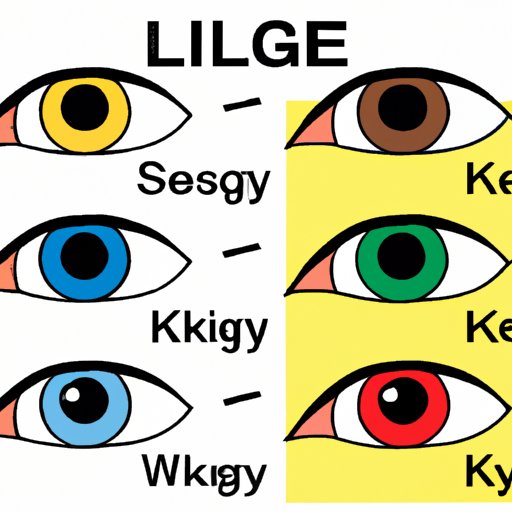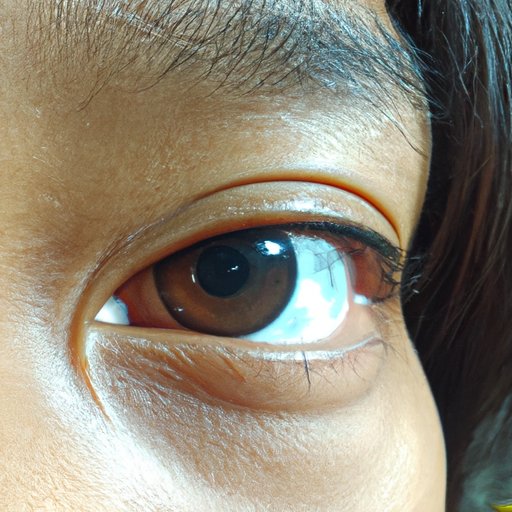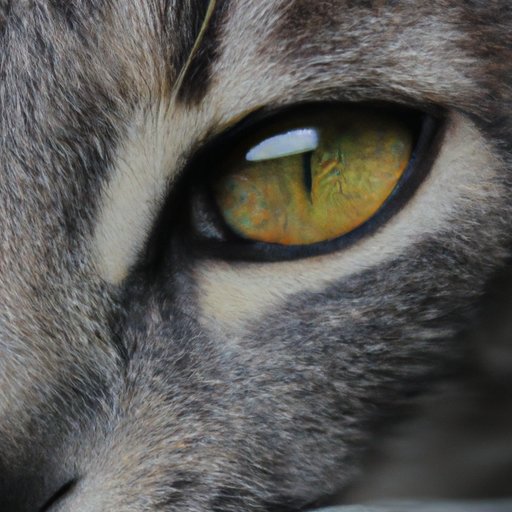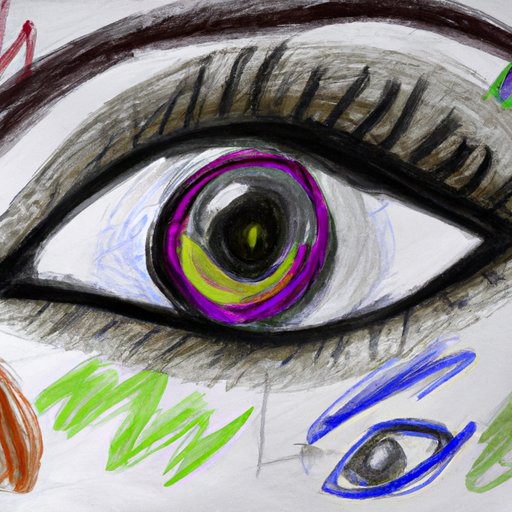Introduction
Writing a vivid description of a character’s eyes can be challenging. Many people struggle with how to accurately and effectively describe eyes in their writing. This article will provide tips and techniques to help you solve this problem.

Describing the Color and Shape of the Eyes
The first step in describing eyes is to use descriptive words to accurately reflect the color and shape. For example, if the character has blue eyes, you could say they have “azure” or “turquoise” eyes. If the eyes are almond-shaped, you could say they have “slanted” or “tilted” eyes. It’s important to take into consideration any unique characteristics as well. For example, if one of the character’s eyes is slightly larger than the other, you could say they have an “asymmetrical” gaze.
Using Metaphors or Similes to Compare the Eyes to Something Else
Another effective technique for describing eyes is to use metaphors or similes to compare them to something else. Common examples include comparing eyes to gems (e.g. sapphire eyes), jewels (e.g. emerald eyes), stars (e.g. twinkling eyes), and animals (e.g. cat-like eyes). These comparisons can be powerful because they evoke strong mental images that help readers visualize the character. They also allow you to convey more information in fewer words.
Focusing on How the Eyes Move When the Character is Speaking
When describing a character’s eyes, it’s important to pay attention to how they move when the character is speaking. Eye movements can reveal much about a character’s thoughts and feelings. For example, if the character’s eyes dart around the room, this could indicate nervousness or fear. If the character’s eyes narrow, this could indicate anger or suspicion. By focusing on these subtle details, you can give your readers a better understanding of the character’s inner state.

Using Descriptive Words to Describe the Emotion in the Eyes
In addition to focusing on eye movements, you can use descriptive words to convey the emotion in the character’s eyes. For example, if the character’s eyes are sad, you could say they have “doleful” or “morose” eyes. If the character’s eyes are full of joy, you could say they have “mischievous” or “sparkling” eyes. By selecting the right words, you can evoke an emotional response from your readers.
Discussing the Eyelashes, Eyebrows, and Other Facial Features
It’s also important to consider the eyelashes, eyebrows, and other facial features when describing eyes. Details such as the length of the eyelashes, the shape of the eyebrows, and the texture of the skin can all add depth to a character’s description. It’s important to remember that subtle details can make a big difference. For example, you could say that the character has “thick, dark eyelashes” or “arched eyebrows” to give readers a better sense of the character’s appearance.
Comparing the Eyes to an Animal’s Eyes
Comparing a character’s eyes to an animal’s eyes can be another effective technique. This technique allows you to draw parallels between human and animal behavior, which can help readers better understand the character. Examples of animals whose eyes can be compared to human eyes include cats (e.g. “feline eyes”), wolves (e.g. “lupine eyes”), and owls (e.g. “wise eyes”).

Describing the Intensity of the Gaze
Finally, it’s important to consider the intensity of the gaze when describing a character’s eyes. A character’s gaze can reveal much about them, so it’s important to choose words that accurately reflect the intensity. Examples of words that can be used to describe the intensity of the gaze include “penetrating”, “intense”, “inquisitive”, and “challenging”. By paying attention to these details, you can create a vivid description of the character’s eyes.
Conclusion
Describing eyes in writing can be a difficult task, but with the right tools and techniques, it can be done. In this article, we discussed tips for accurately and effectively describing eyes in writing, including using descriptive words to accurately reflect the color and shape, using metaphors or similes to compare the eyes to something else, focusing on how the eyes move when the character is speaking, using descriptive words to describe the emotion in the eyes, discussing the eyelashes, eyebrows, and other facial features, comparing the eyes to an animal’s eyes, and describing the intensity of the gaze. By following these tips, you can create vivid descriptions of a character’s eyes that will bring them to life for your readers.
(Note: Is this article not meeting your expectations? Do you have knowledge or insights to share? Unlock new opportunities and expand your reach by joining our authors team. Click Registration to join us and share your expertise with our readers.)
